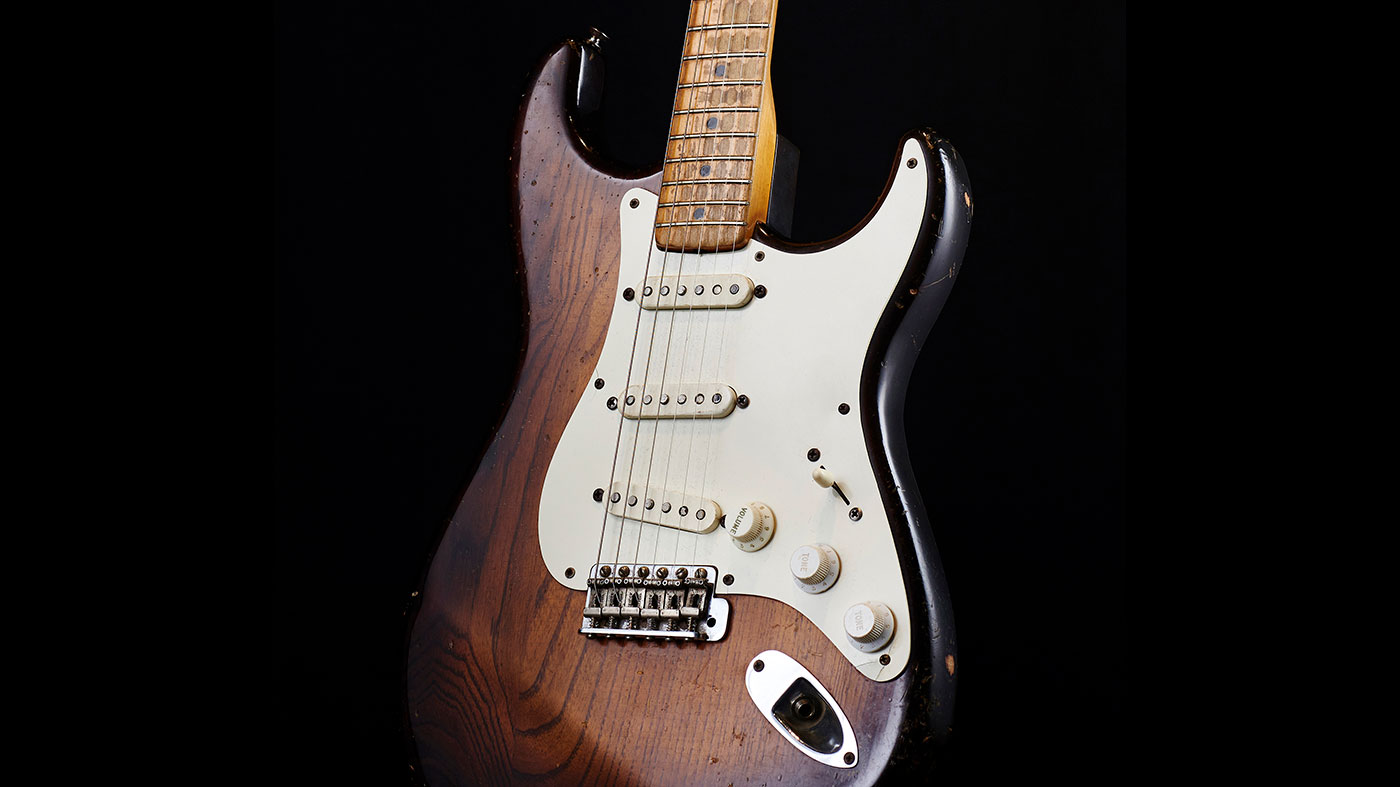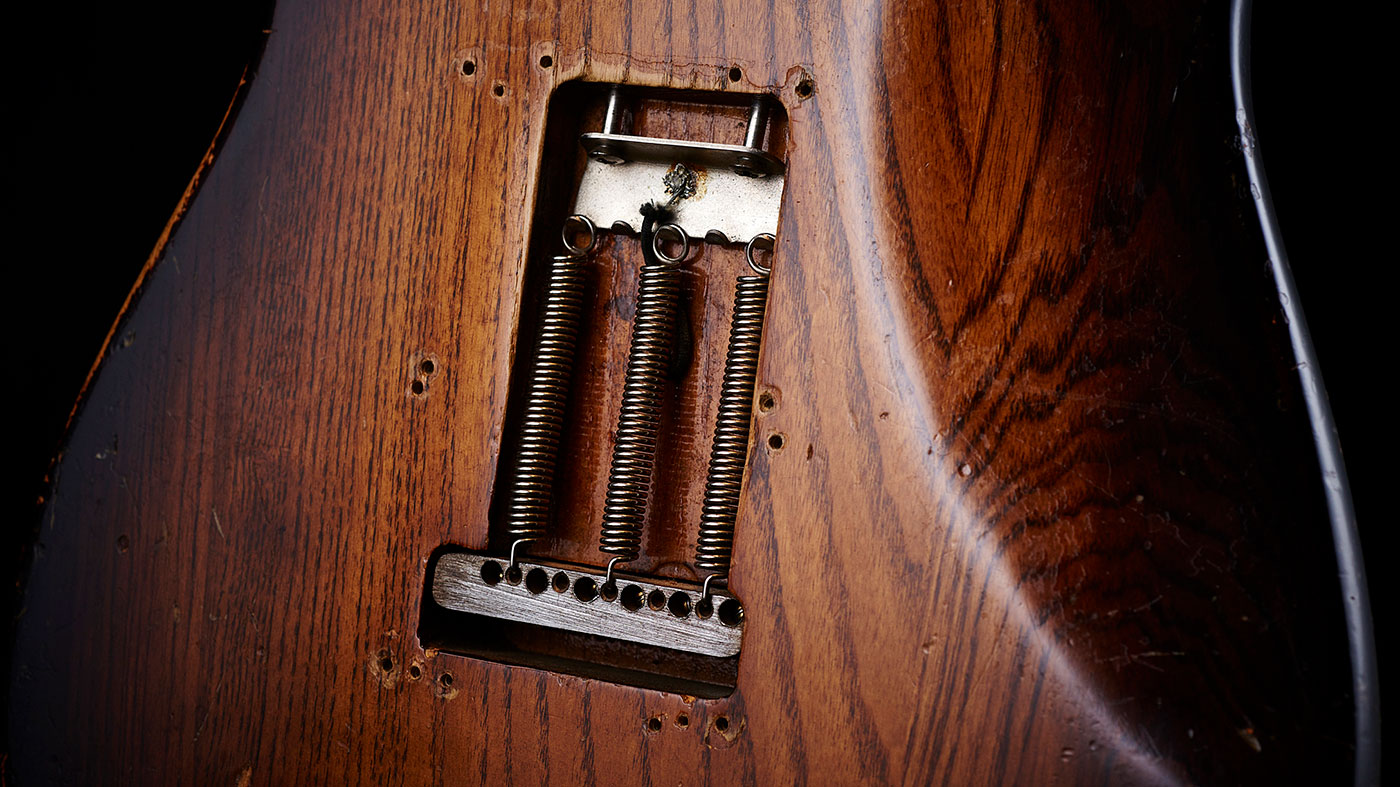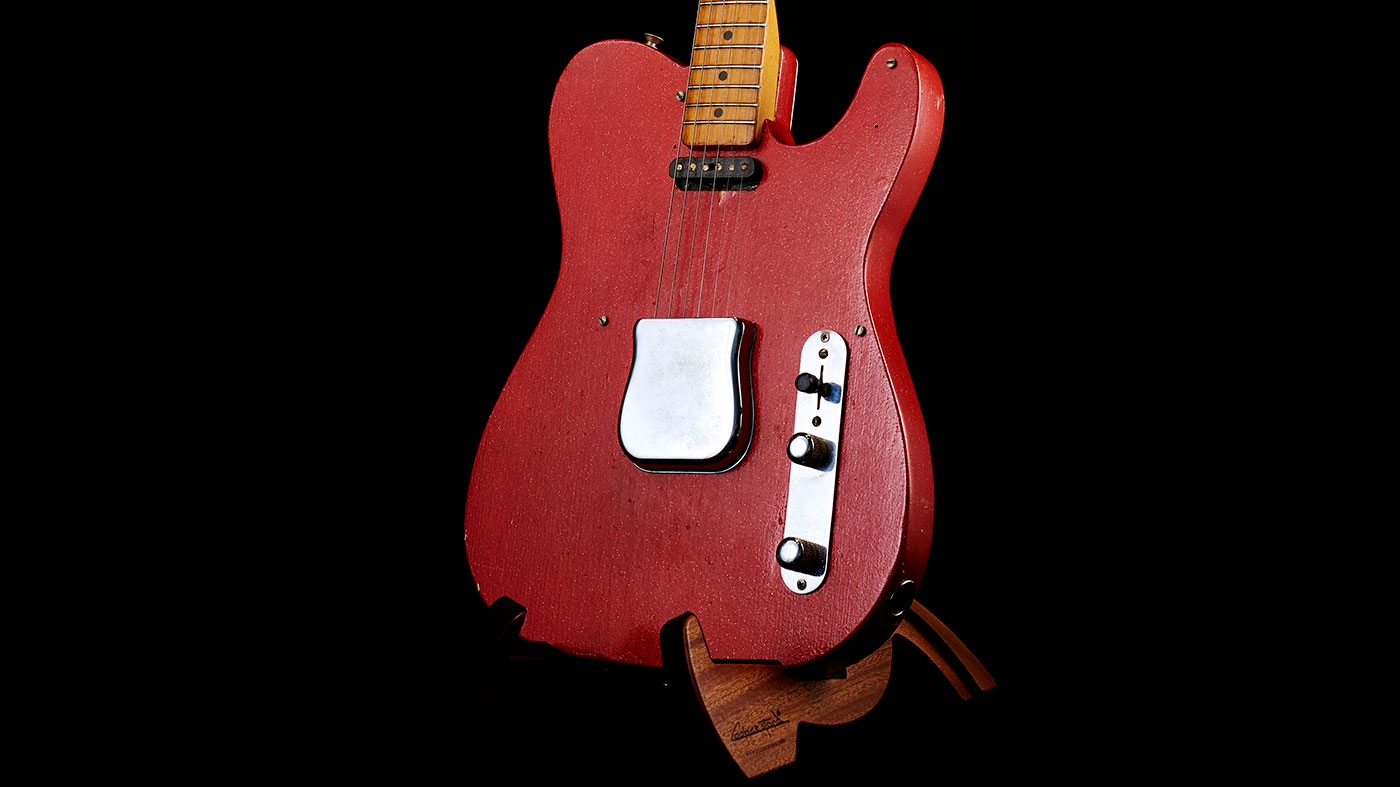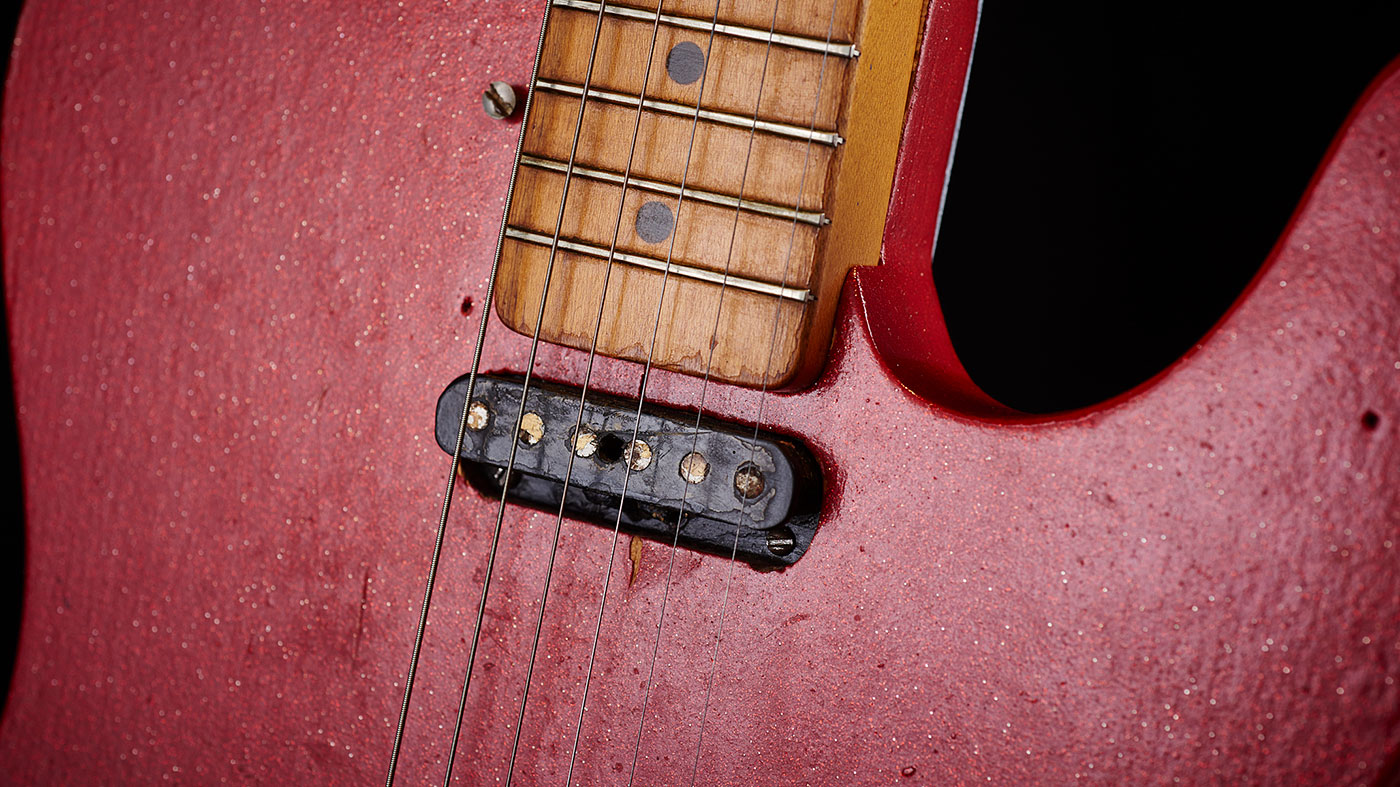The Fender Strat and Tele prototypes that reveal what might have been
We examine two intriguing early guitars from the big F

Our visit to the incredible Songbirds Museum in Chattanooga back in 2018 yielded many treasures, but these two are arguably the most intriguing
. As well as a phalanx of pristine production guitars from the 50s and 60s, the museum also has even rarer gems: Stratocaster and Telecaster prototypes that show how Fender’s most famous electric guitars first took shape.
Curator David Davidson leads us to a cabinet in the museum’s climate controlled Vault, where the most historically important guitars in the collection are kept. First, he pulls out what appears to be a ’54 Stratocaster but which, on closer inspection, shows signs of having been a test-bed guitar with features that never appeared on the finished Stratocaster design.

The furniture polish guitar
It’s actually finished with furniture stain. Fender didn’t paint guitars yet and they were trying something new
“This dates to March 1954, it’s a really cool guitar. This is what’s known in the business as the ‘furniture polish guitar’ - it’s actually finished with furniture stain. Fender didn’t paint guitars yet and they were trying something new. The body is very unevenly matched; it’s just two pieces of ash shoved together with a huge cleft of a cutaway here. They just whacked that thing off with a bandsaw.”
As well as the unconventional finish, David draws attention to the cavity routed for the tremolo (more properly termed vibrato) on the reverse of the guitar. There are numerous screw holes around its edge, suggesting that different positions for the cavity’s cover were trialled - while the trem rout itself has unusual dimensions.
“Look at the trem cavity under there,” David observes. “They couldn’t even really figure out yet how they were going to mount it. Look at the block and look how tight it is. They hadn’t even figured out the spatial reasoning yet. This is a few guys working at one in the morning, breaking their ass. This is really all [the work of ] George Fullerton and Bill Carson, because let’s face it, Leo only invented the fulcrum tremolo on the Stratocaster. That’s his whole play on the Strat.”
David adds that the ‘furniture polish’ Strat was acquired from a seller in Calgary who explained that it had originally been bought from a Fender salesman in Texas during very early public demos of the fledgling Strat model back in the 50s. The guitar’s first owner bought it right off the salesman, who was a man named Jody Carver - a successful lap-steel artist who was a Fender product demonstrator at that time.
Get the MusicRadar Newsletter
Want all the hottest music and gear news, reviews, deals, features and more, direct to your inbox? Sign up here.
“Jody Carver is the guy who won the contest that Leo put out to rename the Broadcaster, giving it the name Telecaster,” David adds, bringing us on to an even more historic prototype kept in the same cabinet: a bright red single-cut whose crude construction belies its significance.

The second Broadcaster prototype
There’s no truss rod in the neck, as Leo originally felt that rock maple necks would be strong enough
“This guitar here is the second Broadcaster prototype, which was painted many, many times at Fender, as it was a test mule,” David explains. “It has an original four-hole pickguard design and has a lap‑steel logo on the headstock and lap-steel pickups.
“It’s serial number 0009. They never had a consecutive order [at that stage]. The first guitar is 0012, the second guitar is 0009. There’s no truss rod in the neck, as Leo originally felt that rock maple necks would be strong enough. It is a pine body with pancake seam, built in four pieces,” David adds. “The guitar weighs nothing. Leo Fender gave this guitar to Sam Hutton who used to do all the tweed for Fender Amps, as a gift.”

If this has whetted your appetite for visiting the museum, a connecting flight from Atlanta reaches Chattanooga in well under an hour. General admission is $15.95, while an all-access guided tour of the museum including the Vault will set you back $38.95. songbirdsguitars.com
Jamie Dickson is Editor-in-Chief of Guitarist magazine, Britain's best-selling and longest-running monthly for guitar players. He started his career at the Daily Telegraph in London, where his first assignment was interviewing blue-eyed soul legend Robert Palmer, going on to become a full-time author on music, writing for benchmark references such as 1001 Albums You Must Hear Before You Die and Dorling Kindersley's How To Play Guitar Step By Step. He joined Guitarist in 2011 and since then it has been his privilege to interview everyone from B.B. King to St. Vincent for Guitarist's readers, while sharing insights into scores of historic guitars, from Rory Gallagher's '61 Strat to the first Martin D-28 ever made.
“To be honest, I feel like I am playing a high-end Gibson guitar”: Epiphone and Guitar Center team up for a colourful riff on a cult classic with the limited edition run Les Paul Custom Widow
“The humbuckers give it so much power and such a wide variety of tones while the destruct button really sets it apart from just about any other Tele”: Fender unveils the Mike Campbell “Red Dog” Telecaster












